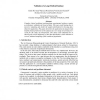Free Online Productivity Tools
i2Speak
i2Symbol
i2OCR
iTex2Img
iWeb2Print
iWeb2Shot
i2Type
iPdf2Split
iPdf2Merge
i2Bopomofo
i2Arabic
i2Style
i2Image
i2PDF
iLatex2Rtf
Sci2ools
CBMS
1995
IEEE
1995
IEEE
Validation of a Large Medical Database
Complex clinical problems involving huge experimental evidence require a preliminary validation of observed data. This may avoid biasing due to incorrect sampling and clarify the sample distribution by showing datainherent regularities. The paper describes the application of unsupervised models of neural networks to the analysis of a very large set of clinical records for the study of Osteoporosis. The main result obtained lies in showing the overall uniformity of the data distribution, which indicates a correct, unbiased sampling of the considered population.
CBMS 1995 | Complex Clinical Problems | Datainherent Regularities | Medical Imaging | Preliminary Validation |
| Added | 25 Aug 2010 |
| Updated | 25 Aug 2010 |
| Type | Conference |
| Year | 1995 |
| Where | CBMS |
| Authors | Guido Rovetta, Patrizia Monteforte, Gerolamo Bianchi, Stefano Rovetta, Rodolfo Zunino |
Comments (0)

